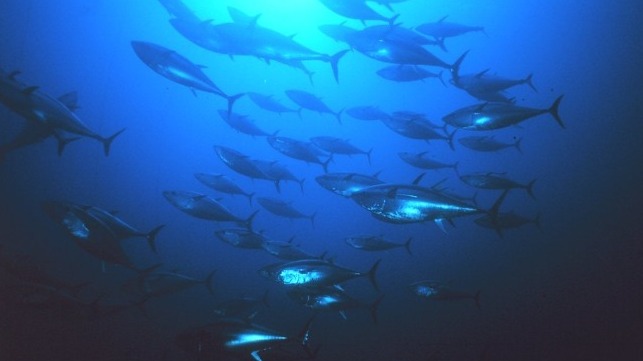Op-Ed: Time to Measure the Abundance of Ocean Life

As humanity enters what the United Nations has designated the Ocean Decade, we do not know the total amount of marine life, the biomass, in the oceans. Many experts firmly believe the abundance of marine life is diminishing. However, we have time series for only a few taxa, and these make up a small fraction of the total amount of life. We have only crude, uncertain estimates of biomass by trophic level.
Through the Census of Marine Life (2000-2010) and other programs, experts have made great progress in estimating and describing the diversity and distribution of marine life, from the whales and sea birds to the microbes. However, abundance has remained largely unmeasurable, or measured quite indirectly, for example, through catch data for the fished species, which form only a few percent of all marine species, or through imagery of small patches of sea floor life.
During the 1970s satellite images of Earth’s continents began a revolution in human knowledge of the area, biomass, and carbon content of forests. The maps of changing forest cover and associated variables triggered worldwide movements for better forest management and conservation.
Comparably revolutionary advances in technology now offer the prospect that during the Ocean Decade we could for the first time chart reliably the changing quantities of life in the ocean, in aggregate and in detail, by trophic level, species, habitat, and region. Foremost among the technologies is genomics, where eDNA, the loose DNA in water, can enable estimates not only of diversity but also abundance. Complementing genomics, acoustics and signal processing, tagging and tracking, and satellite imaging of ocean color and other surface characteristics, as well as traditional survey methods, can verify estimates and make possible generalizations over large scales.
Helpfully, a bold 2019 paper, The Biomass Composition of the Oceans: A Blueprint of Our Blue Planet, offers an initial comprehensive view of the distribution of marine biomass in taxonomic groups (bacteria, archaea, animals, protists, plants, and viruses), modes of life, and habitats. The paper, which draws eclectically on data collected with diverse methods over decades, can serve as a hypothesis or point of departure for the first ever systematic measurements of absolute abundance of marine taxa.
A decadal program focused on absolute abundance of marine life will inevitably also yield enormous gains in knowledge of relative abundance, diversity, and distributions. It will also yield better estimates of the blue carbon retained by marine life, and how that might rise through wiser human relations with the oceans. It will speed development of the Global Ocean Observing System and the worldwide capacity to operate it.
The Ocean Decade has elicited calls for “Moonshot” programs of research and exploration. A program accomplishing the initiation of reliable time series on the abundance of ocean life would alone make the Ocean Decade a historic success.
Jesse H. Ausubel is the Director of the Program for the Human Environment at The Rockefeller University.
This article appears courtesy of Real Clear Science and may be found in its original form here.
Top image: School of tuna (United Nations Food and Agriculture Organization / Danilo Cedrone / CC BY 2.0)
The opinions expressed herein are the author's and not necessarily those of The Maritime Executive.

